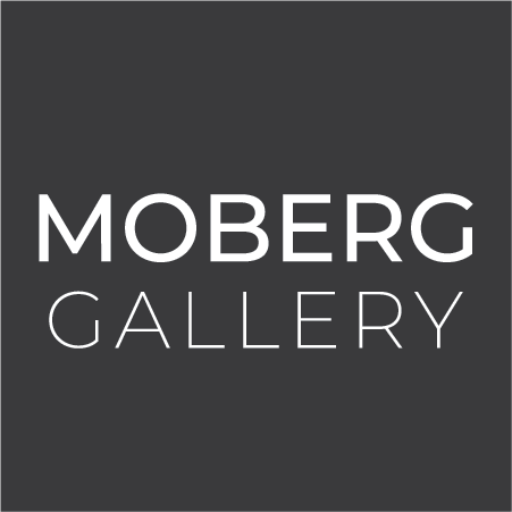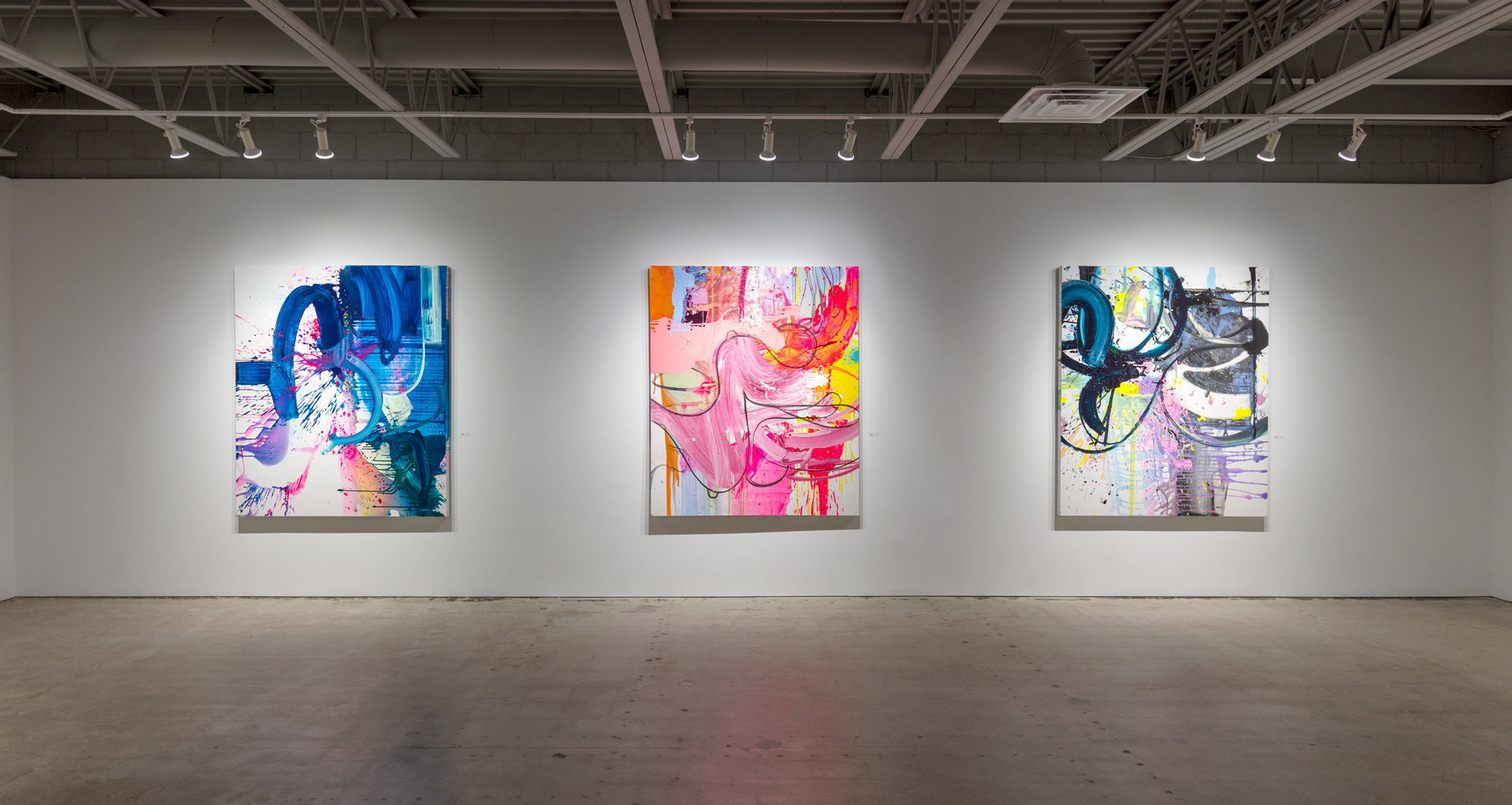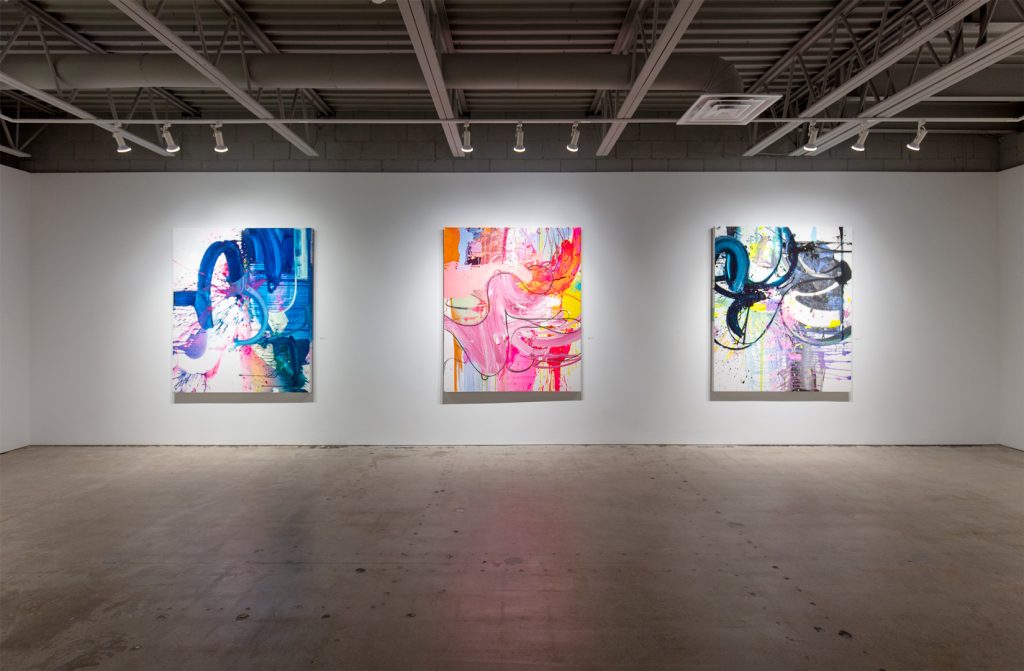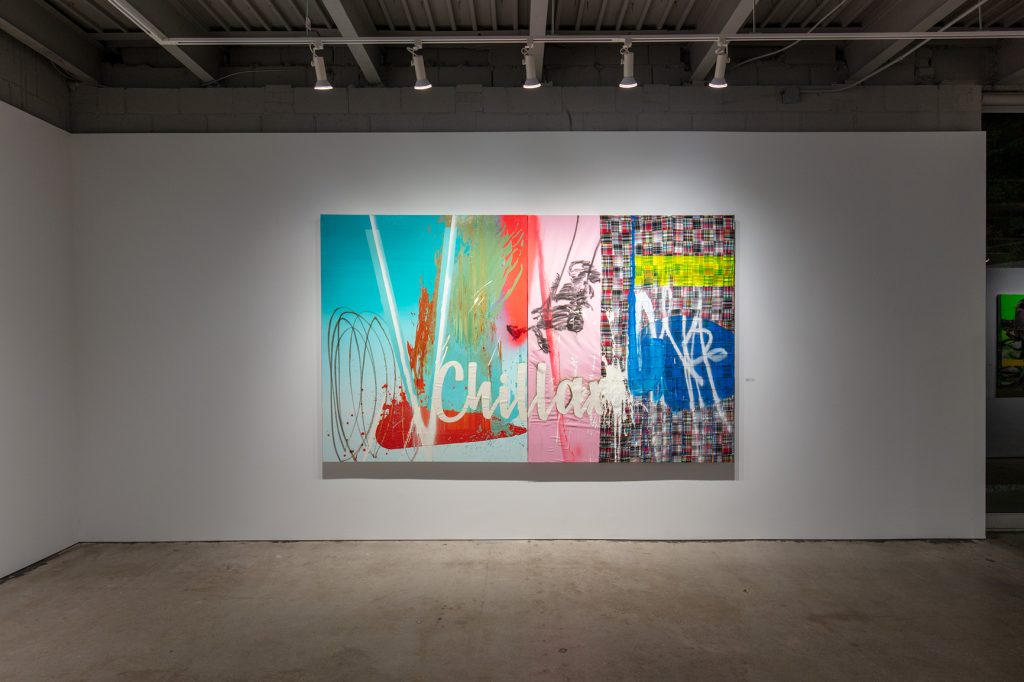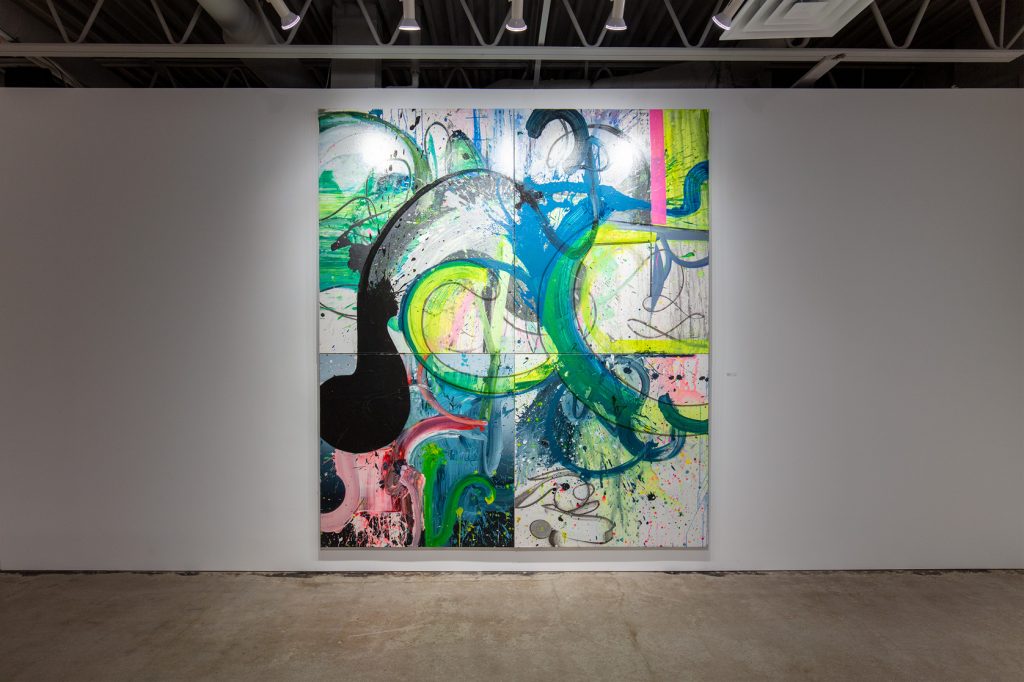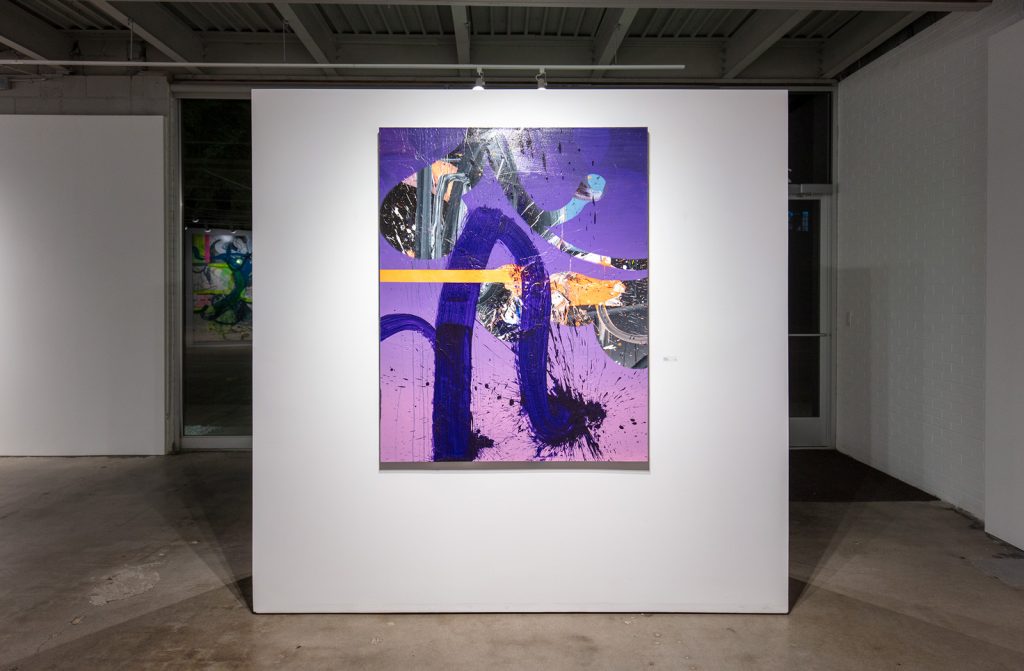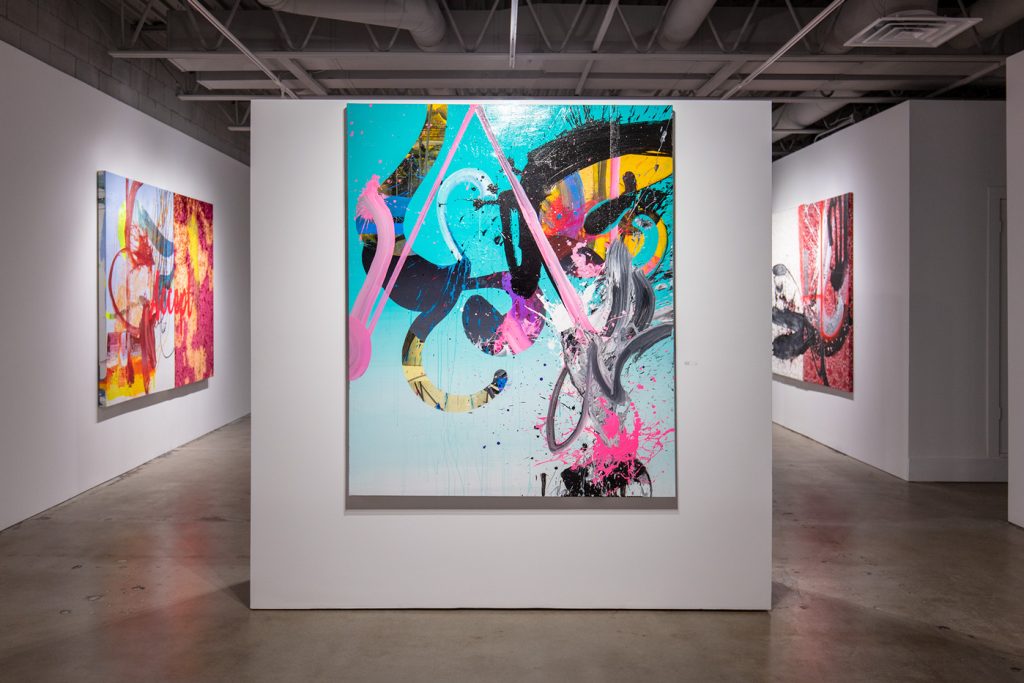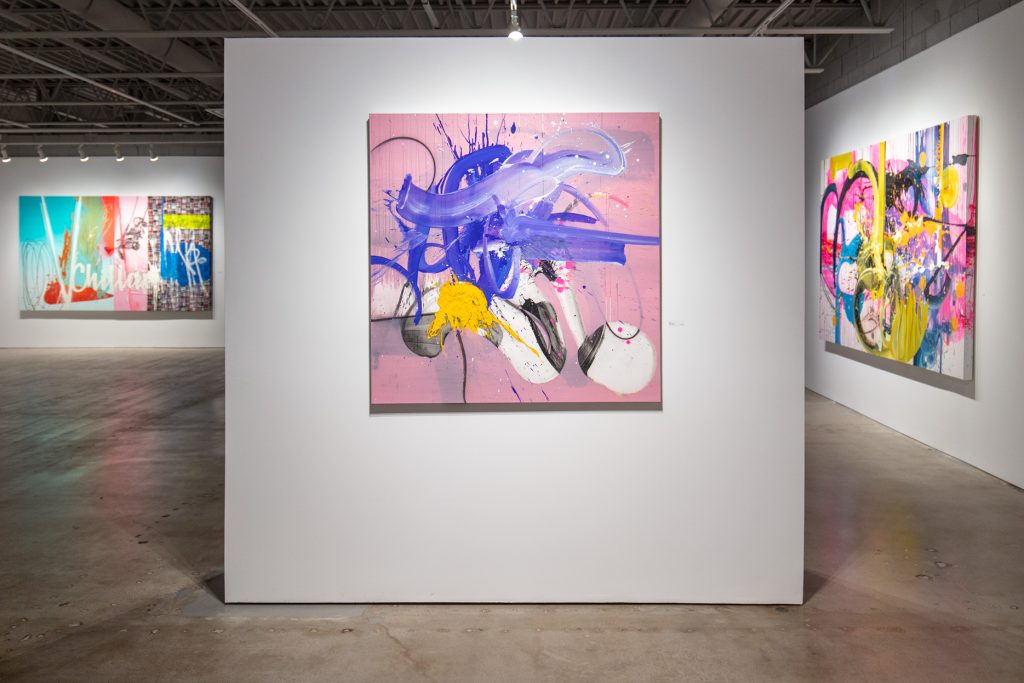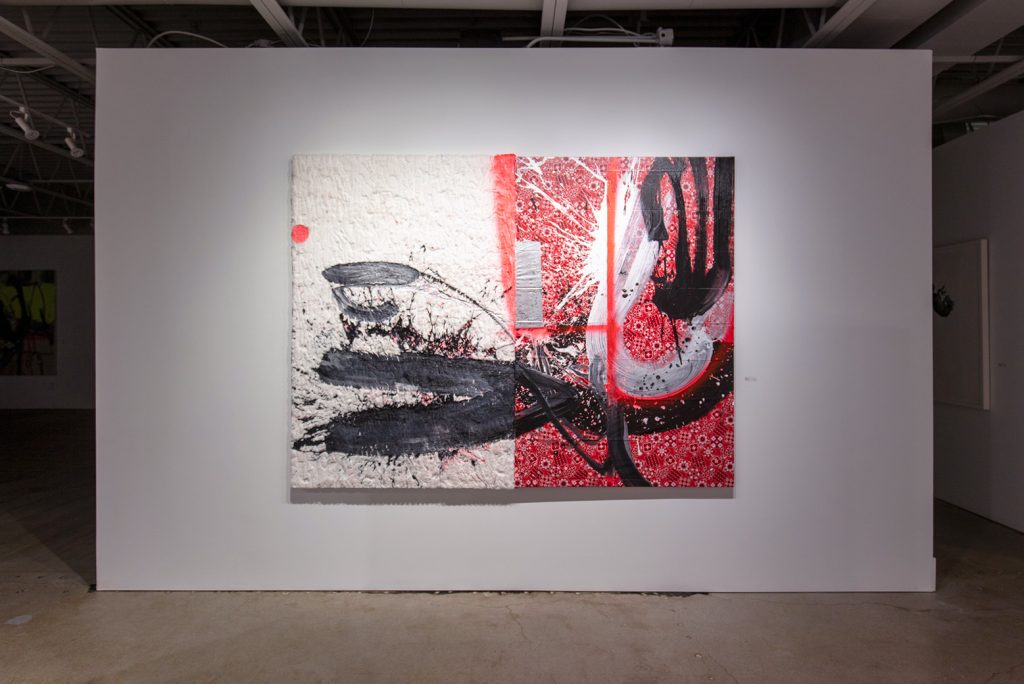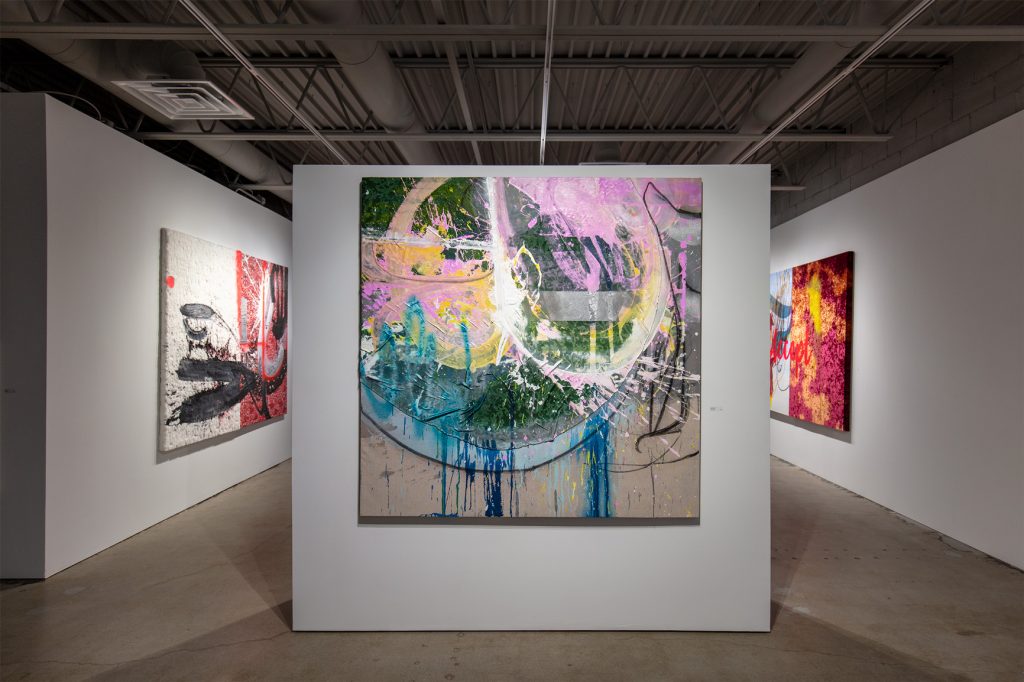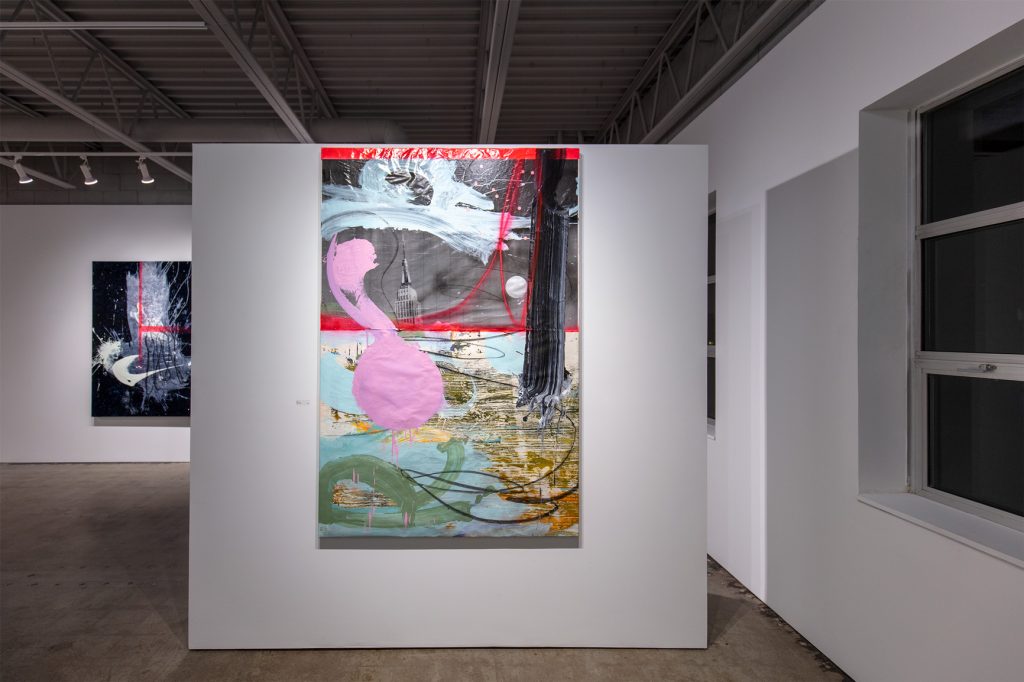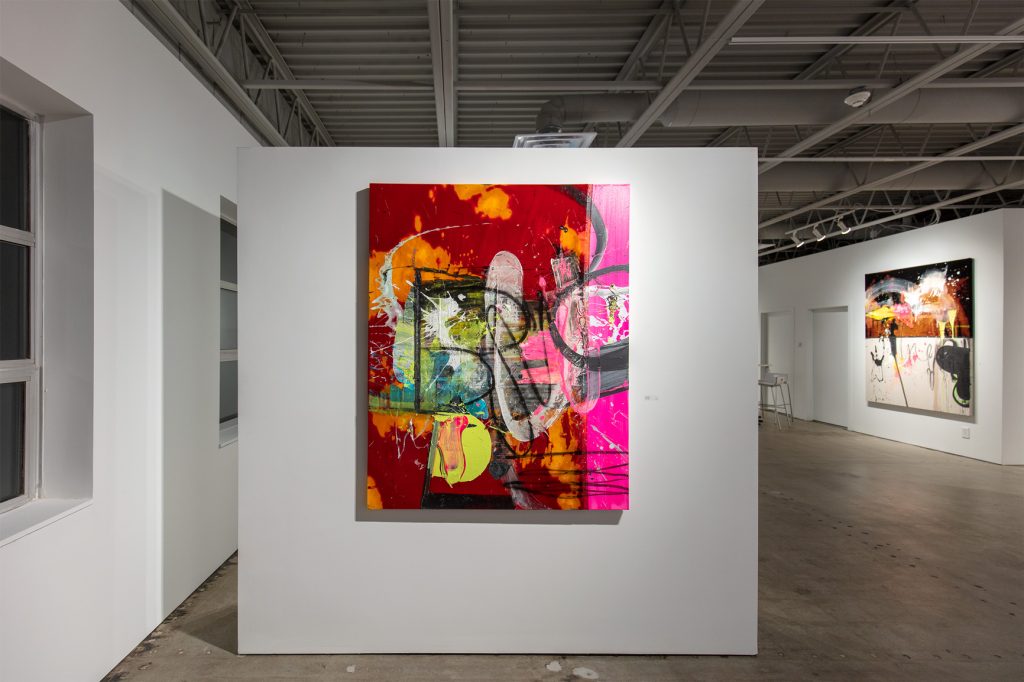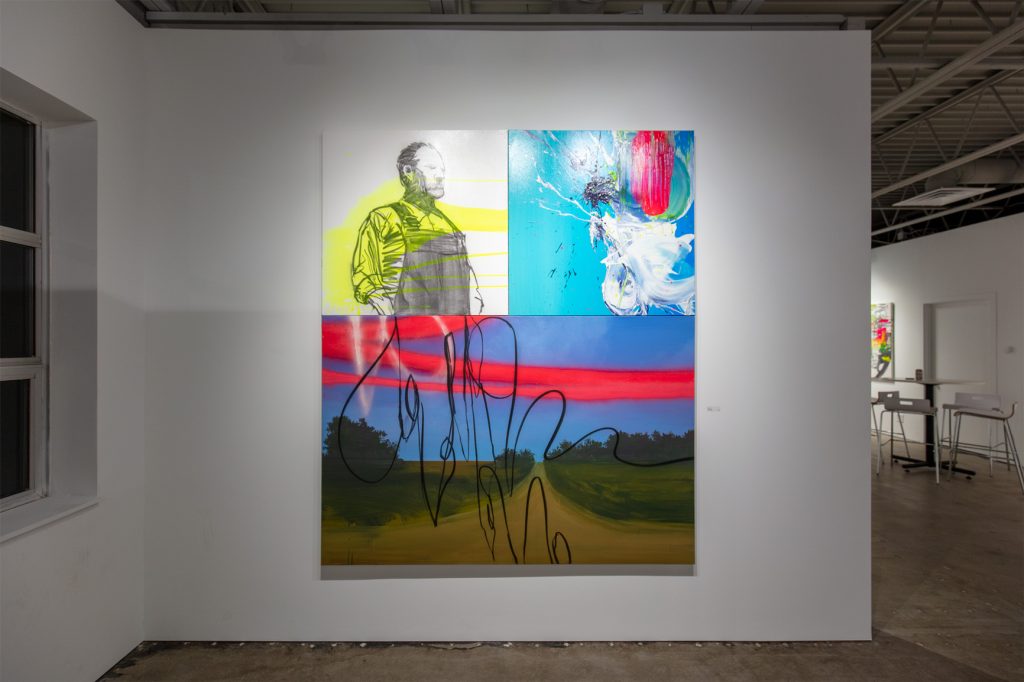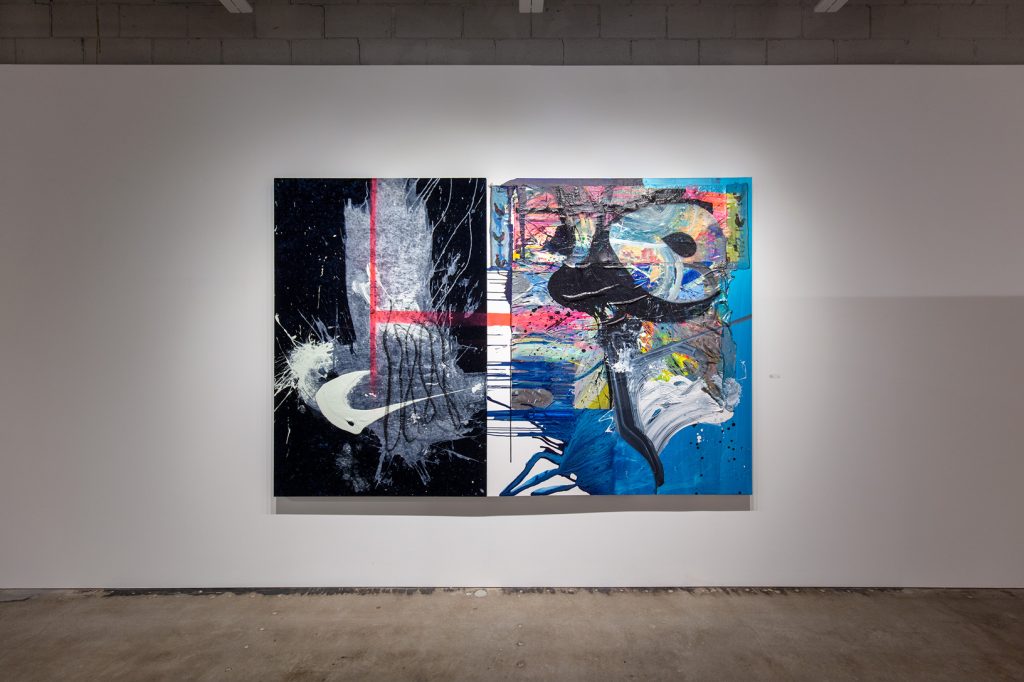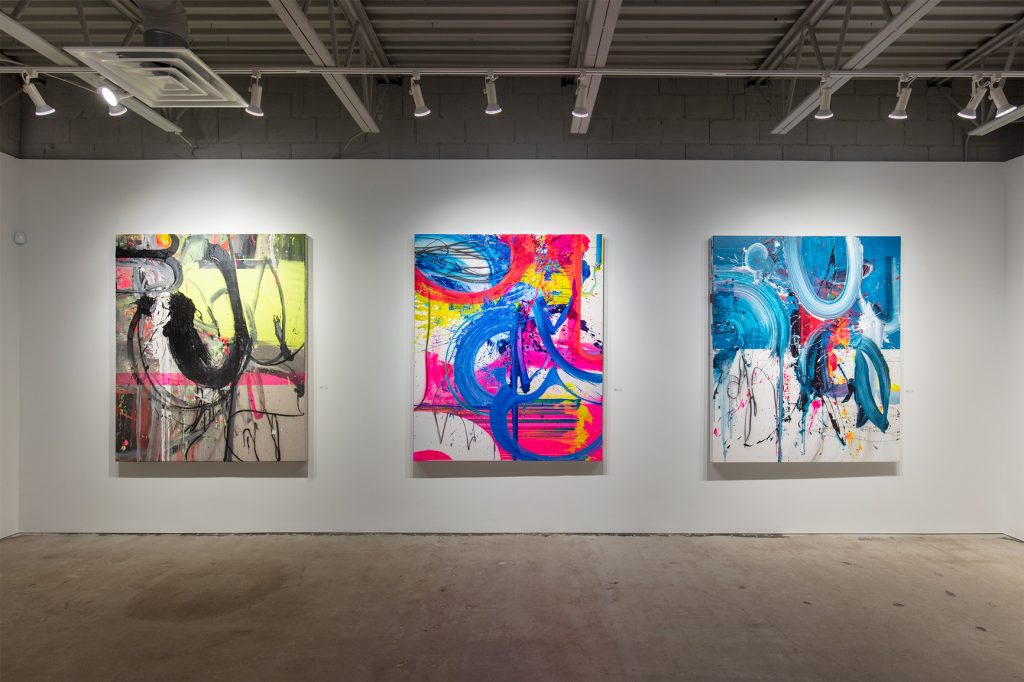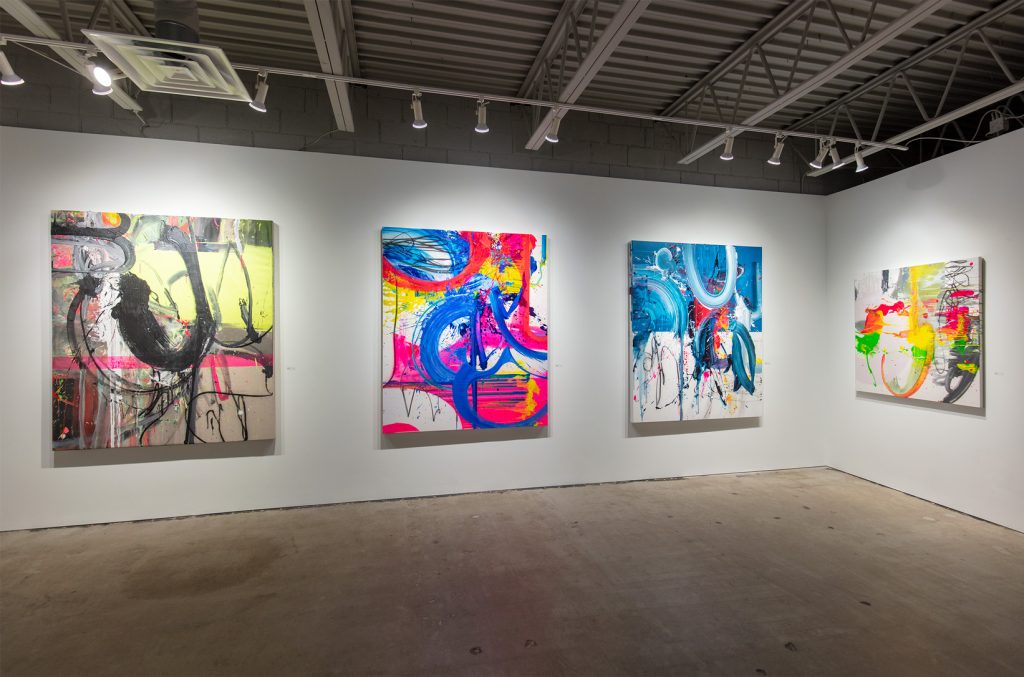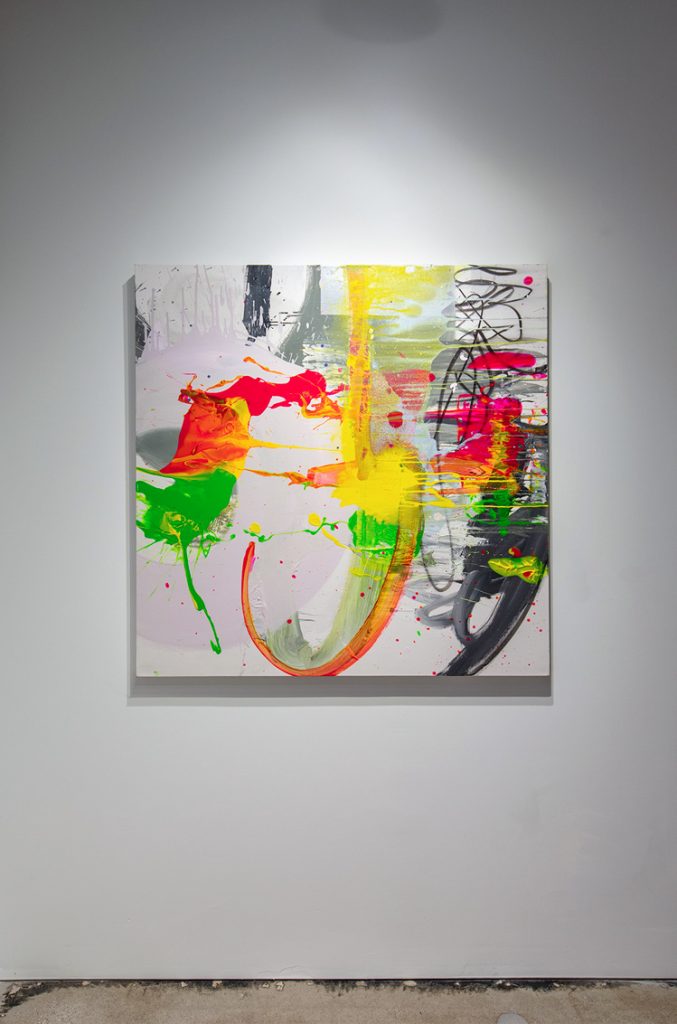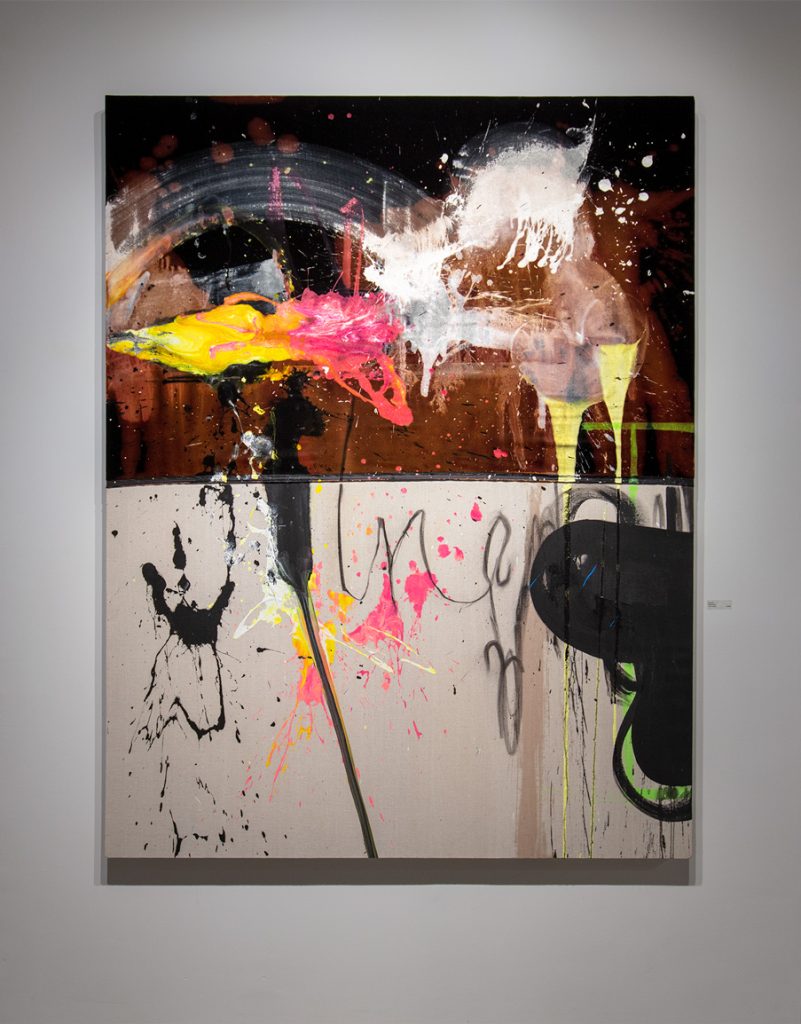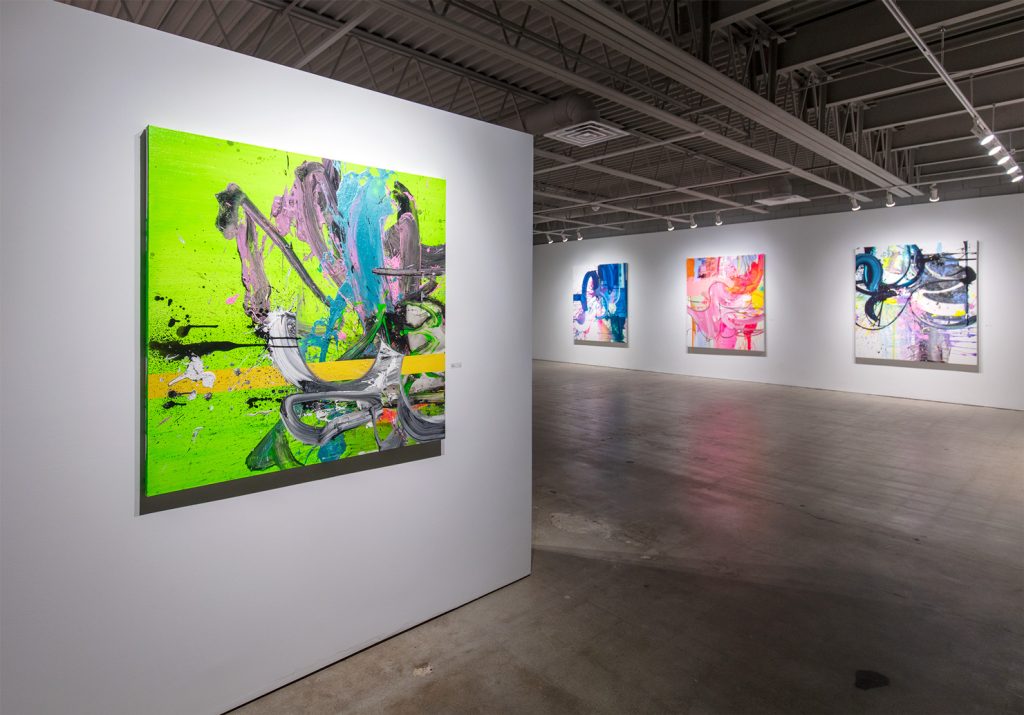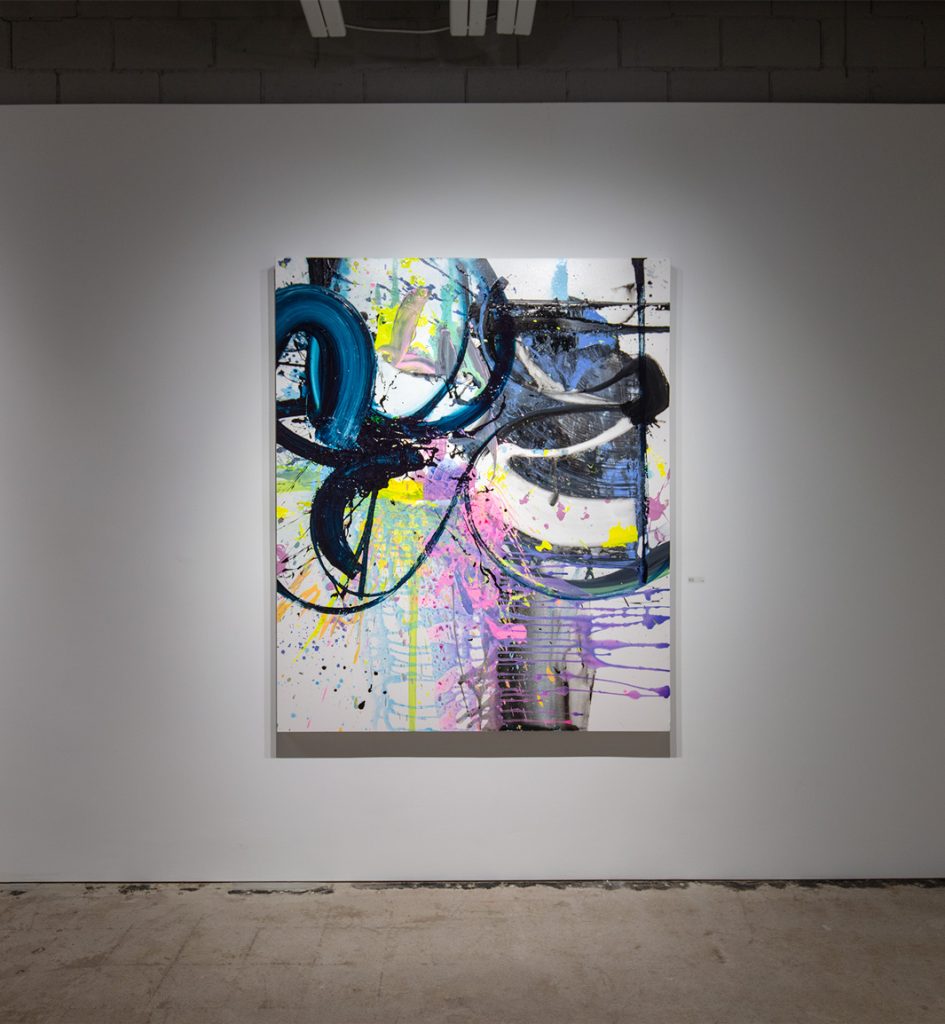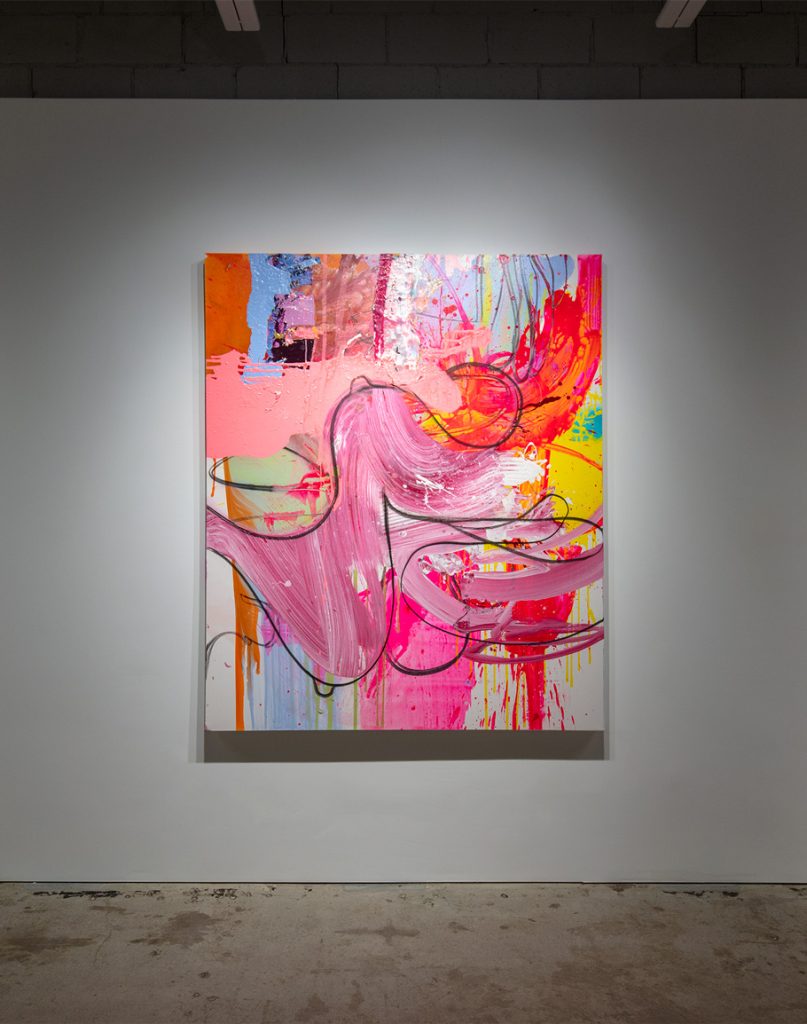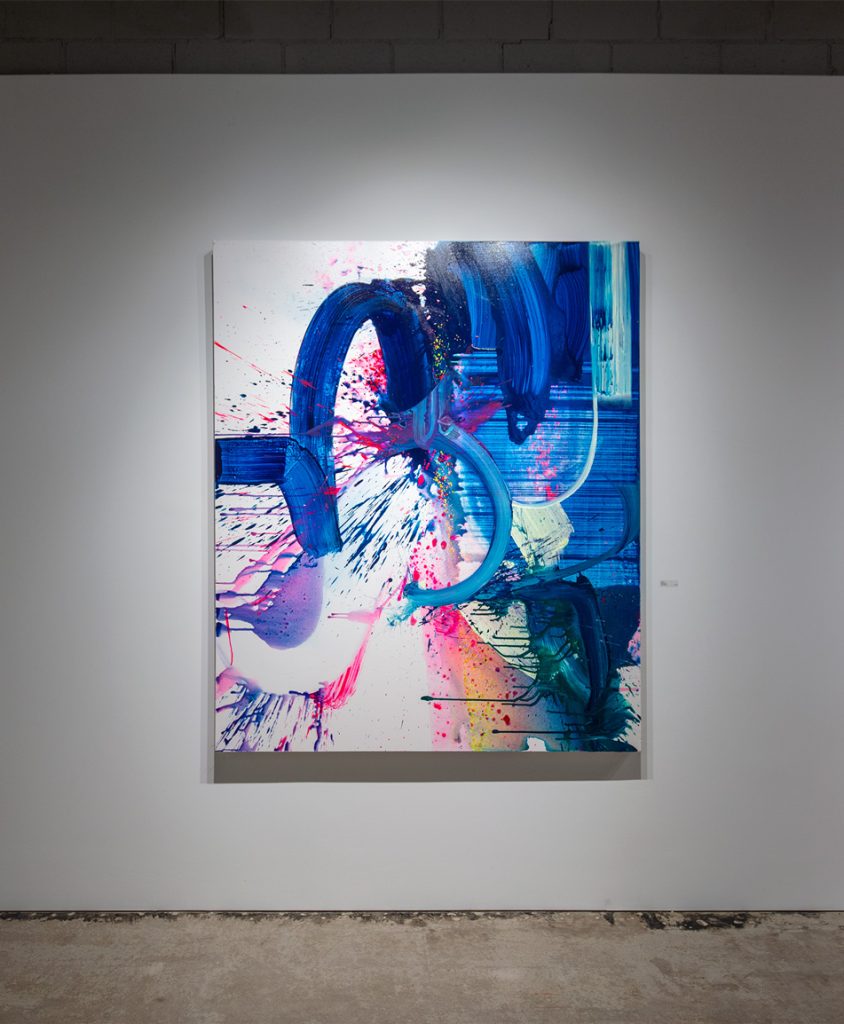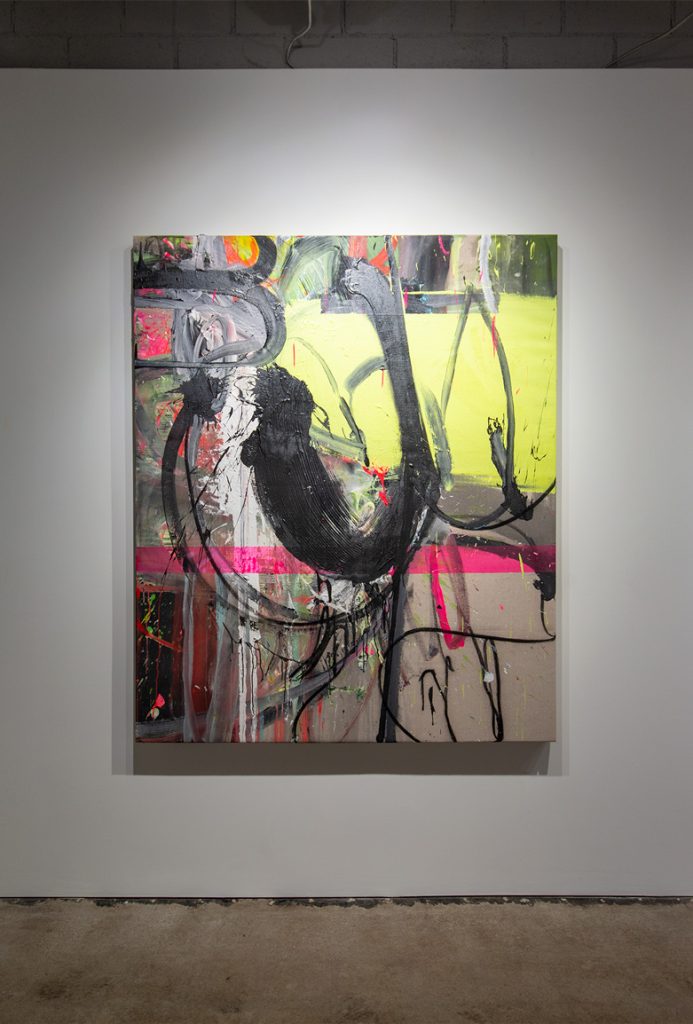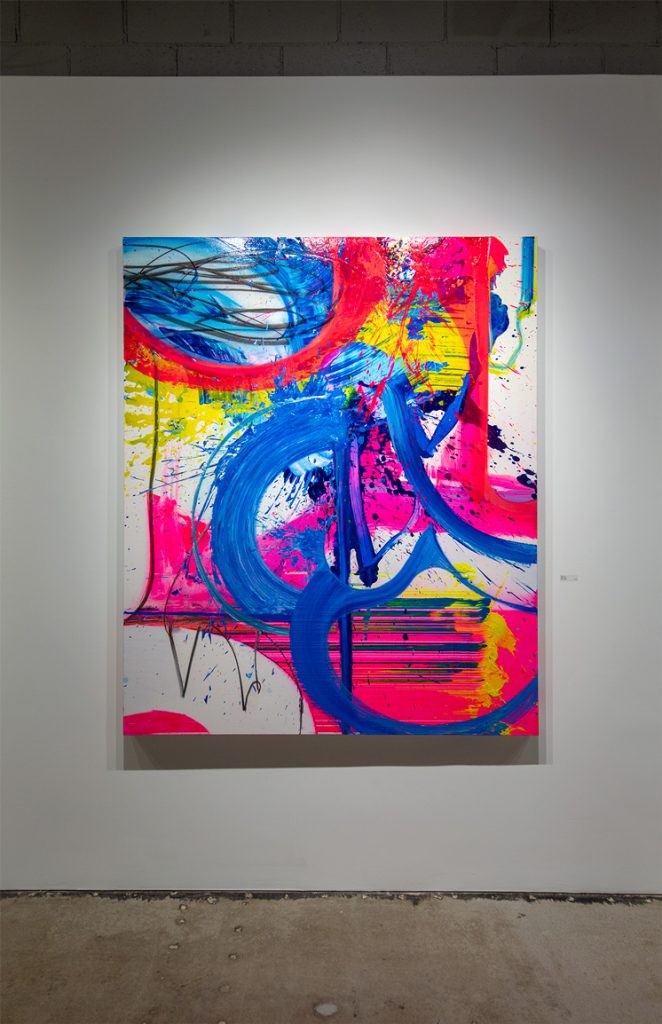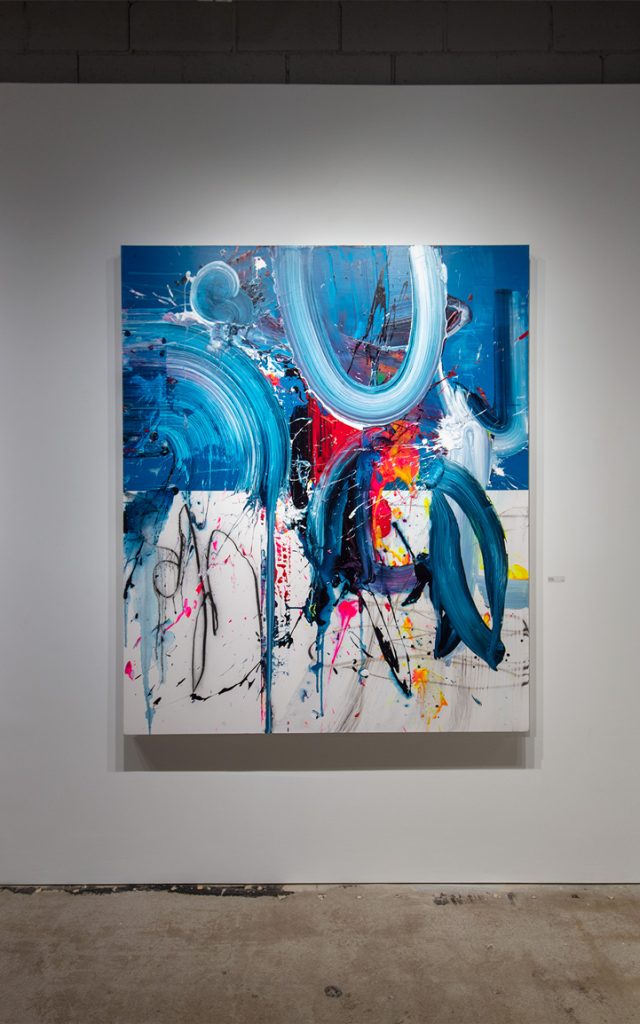TEXT BY MICHAELA MULLIN | VIEW IMAGES
Chuck Hipsher: The Healing
Chuck Hipsher’s current exhibit of mixed-media paintings (aka a collection of short stories), The Healing, has a title that often lends itself to thoughts of incident and aftermath. But what we don’t always acknowledge is that life is more like a continuance of healing. A thing we do, interiorly and externally, always; and these new large-scale works, like Hipsher’s entire oeuvre, take this into account. Using tactile media, such as faux rabbit fur, tablecloths and runners, and textiles of recognizable and time-period-specific patterns, Hipsher manages to comfort the viewer by offering identifiable historical, collective memories, in a way that also falls under the titular definition.
Space and Time are two threads that, obviously inextricable in our physical world, are as entwined within the psyche of Hipsher’s process. Art critic Jerry Saltz recently quoted Jasper Johns, “If you avoid everything you can avoid, then you do what you can’t avoid doing—You do what is helpless, and unavoidable” (“Jasper and Me: The artist who invented contemporary art also changed my life,” New York Magazine, Sept 22, 2021). Hipsher agrees that he is also compelled, helpless to create anything but that which wants to emerge. He does not vision a completed painting but “lets go” to allow for the inadvertencies his intentions manifest.
The high speed of splatter is conveyed in Hipsher’s strokes and striations, as if each large canvas is a forensic investigation. As well as a gift. Because life and death are also at the core of his work, and like French philosopher Paul Virilio theorizes, Hipsher nods to the inherent accident in speed / progress / technology. Potential for disaster is inherent in any advent such as planes, trains, and automobiles, as Virilio determined. And the inevitability of death in each conception of life can create existential schisms. These works are beautiful renditions of such schisms.
Diptychs and polyptychs are the perfect vehicle for his investigations of the natural world colliding with technology, for life meeting up with mortality. He says this collision is his main study, and provides the primary questions he explores—how do we co-exist with/in these seemingly diametrically different realms? He says:
I was thinking about the intersection or convergence of these three things [art, words, and music] and how my work in all three areas harmonically resonates a similar feel and intent; I am obsessed with life and death and the delineation between them. I think that’s where my work lives. It exists in a familiar yet mysterious zone. It is attempting to close the gap. To provide a glimpse into a crossing […] To leave a sense of satisfaction and hope for the viewer/collector/audience.
Take, for instance, Hipsher’s triptych, “Truro.” This may be one of the oldest memories, or earliest stories of and for him. A painting of the rural and familial, and the least “abstract” of the show, perhaps. It is also the “slowest” work; like a “Sunday drive in the county” rather than a drag race, capturing a moment where the human figure, presence, is included in the telling. And the landscape is pastoral as well as psychological.
“Swung” also does this. Its letters spell ‘chillax,’ and the girl who swings in the just-off-center, pink vertical band references Banksy’s Swing Girl (aka Girl on a Swing), with madras patchwork plaid forming a third segment of the work. The Preppy Handbook has gone fine art spread. One can imagine this youthful, carefree spirit caught between the wild and the WASP. And the future.
“Gambler”’s fluorescent green holds a muted mustard yellow stripe girding the lower half of the painting; this is one of many of the new paintings that are immersive neon-color experiences. They glow in daylight, like many a sock or bangle or bag in the 80s. And “Rainbow” has white and deep blue, and in its collision creates a prismatic moment in the right lower quadrant. Above that, the blue looks squeegeed to show a beginning yet with an infinite intimation. Richter-like, but more dynamic.
“Buspirone” is an antianxiety diptych with smudges and what appears to be a swooshing out-of-control Nike symbol on a velvety surface. Because what happens when you can’t “just do it?” This is what people with anxiety and depression face every day. It is not as simple as an athletic motto. It is not, like the left panel of the diptych, (blue)black and white. Buspar, the name brand version was discontinued many years ago, however the generic Buspirone, became hard to procure in 2019, leading right into the 21st century’s first major pandemic, COVID-19. And the red T intersection that stretches from right to left only give two options: up or down. The wildness of the right panel is explosive and congested around a beautiful though black embrace of paint (almost figure-like).
The “Reunion” diptych with rabbit fur and red square and paisley bandana fabric appears to be futilely taped near its center axis, but Hipsher’s layers are deceiving—is this duct tape-like patch above or below? The slightly imperfect red/pink/coral circle is literally an outlier dot, same but different than the lines (as in “Buspirone”). It’s a lost way. A leap of paint. And a reminder that a drop or smear makes things more touchable, and thankfully, less pure. Two such strange textiles meeting to abut though not crossover. Yet. Hipsher masters the art of mingling—ideas, media, shapes, text. In some ways, he unites everything he touches (on).
“Get Back Up Again” uses the tablecloth from Hipsher’s former home and marriage. The drapery, instead of flowing and hanging and smoothed out on a flat surface for use, becomes a bundle of cloth, frozen in paint and time. It ‘holds’ a swirling mess, as if the cloth had attempted to be pulled out magician-style, but it was more a pulled rug beneath feet than any feat of precision and practice. There are no broken plates, a la Julian Schnabel, no clean ruptures—only the murk that a table setting cum unsettling may cause.
The stellar painting, “Singularity,” might sum up Hipsher’s philosophical queries, if only it were that clear. But interaction and interconnectivity are nuanced, and while crisis often feels and looks spectacularly unequivocal, it is not so physically raw despite the emotional and evocative rawness. The idea that at some point in our future, technology will no longer be controllable, is signified here with deep purple and black, a large and painful bruise. An orange beam of paint goes straight to what appears to be a gateway, arch, portal; where it meets, the line falters, and out the other side of the threshold, it is no longer the linear thing we knew.
Things butting up against each other. Boundaries and thresholds. How we do and don’t cross space and time, and each other. There is a red and yellow and orange thread through this show. Literally. Tying things together while keeping them loose. Losing things while trying to keep it together.
These works journey through broken years and the repair work that’s been done amid collapsed structures. “All the pieces [I’m] showing have been executed during these tumultuous times. They’re a grand collection of a broken and bruised and scared and hopeful soul,” says Hipsher. The past two years have been prolific, and Hipsher has created something better than pharmaceutical aides, he’s created art as anxiety and anti-anxiety—it’s holism at its boldest.
The music maker and lover in his work resounds throughout this collection, like stories that create an autobiographical yet universal narrative arc. His lyrics are visual, and the lyrics I hear in my head as I wander and wonder through Healing are from Bowie’s “Changes”:
Strange fascinations fascinate me
Ah, changes are taking
The pace I’m goin’ through
Exhibit Images
